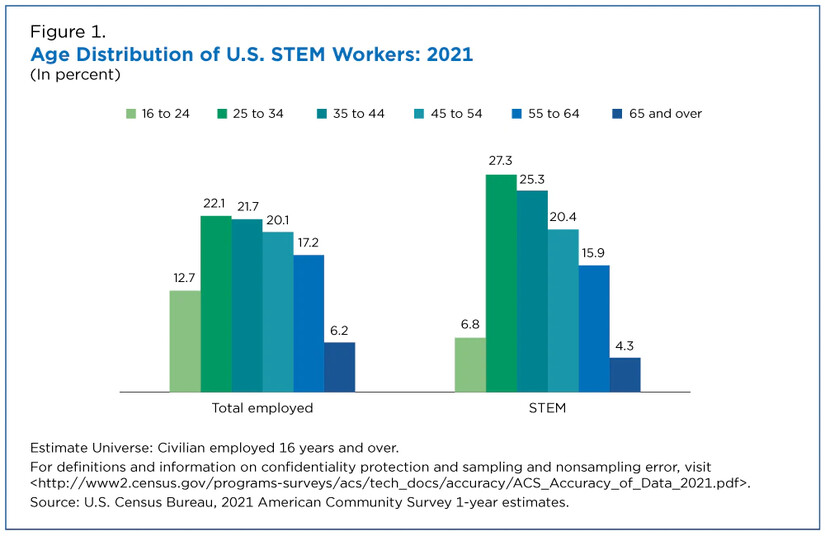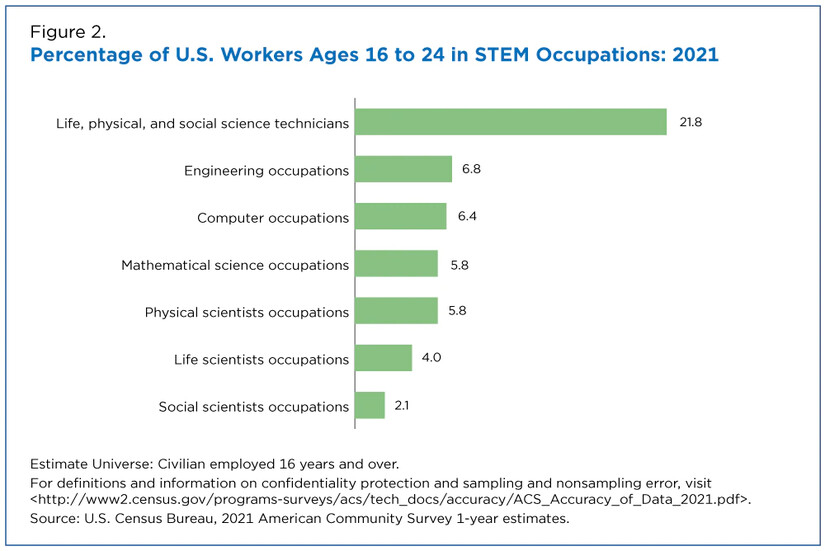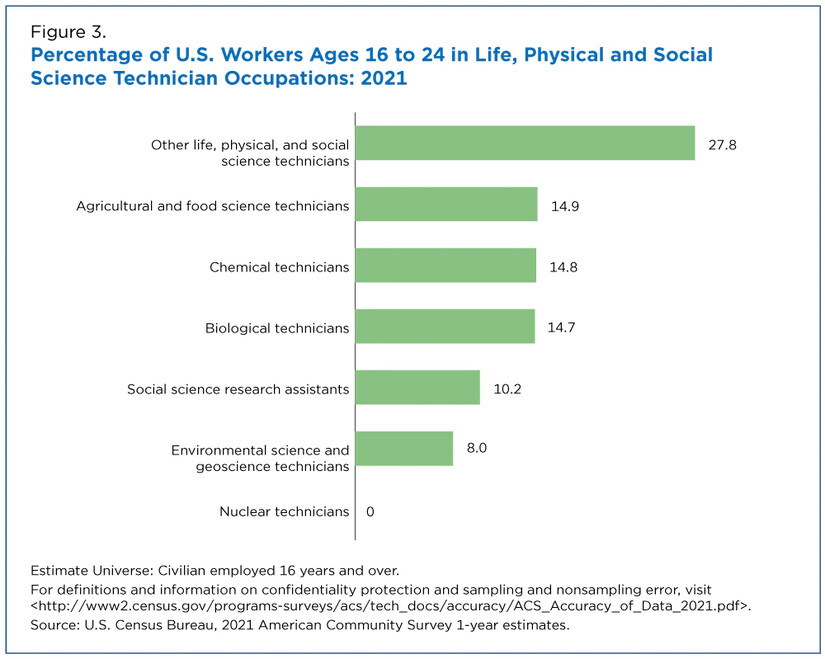Young Workers in STEM

Jobs in the fields of science, technology, engineering, and math (STEM) often require a bachelor’s degree or higher, leaving few STEM opportunities for workers younger than 25 who shape the nation’s future workforce.
As a result, in 2021 workers between the ages of 16 and 24 made up 12.7% of total employment across all occupations but only 6.8% of all STEM workers (just under 800,000) in the United States.
While less common, STEM opportunities for young workers without a college degree exist – mostly technician occupations – and are needed to meet future demand.
According to the Bureau of Labor Statistics, employment in STEM occupations is projected to grow at twice the rate (10.8%) of overall employment (5.3%) through 2031.
National STEM/STEAM Day is celebrated every year on November 8 to encourage kids to explore their interests in science, technology, engineering, arts, and math careers. And nationwide efforts are underway to attract and train young workers through registered apprenticeship programs.
STEM occupations range from computer specialists to social scientists and STEM-related occupations include health care practitioners and architects.
As STEM employment increases, what are some potential STEM pathways for workers under 25?
We explore data from the recently released 2021 American Community Survey to highlight STEM occupations by age.

Younger Workers and STEM
Younger workers (defined here as those between the ages of 16 to 24) are employed in a wide range of STEM occupations, with the largest concentration in technician-related ones.
Workers between the ages of 16 to 24 accounted for 21.8% of all life, physical, and social science technicians in the United States in 2021. Smaller percentages of younger workers held STEM jobs as life scientists (4.0%) or social scientists (2.1%).

Life science technicians often work in laboratories assisting scientists and researchers with tasks such as collecting lab samples, performing routine tests, and maintaining laboratory equipment. Life science technician jobs generally only require a high school or associate degree and receive on-the-job training to maintain or advance to a new position.
Among the life, physical, and social science technician occupations, “other” was the detailed category with the largest proportion (27.8%) of young STEM workers. This group of workers includes polygraph examiners, soil testers, meteorological aides, and others.
Within the various technician-related occupations, a similar share (around 15%) of workers between the ages of 16 and 24 were employed as agricultural and food science technicians, biological technicians, or chemical technicians. Another 10% were social science research assistants and 8% were environmental science and geoscience technicians.

Aging STEM Workforce Still Younger Than Total Labor Force
The STEM workforce tends to have a younger age profile than the overall workforce.
In 2021, workers between the ages of 25 to 44 made up more than half (52.6%) of STEM workers – the largest share of STEM workers. Around 40% of older workers, those ages 45 and more, worked in STEM.
Despite the smaller share of older workers, the STEM workforce is aging. Older workers are staying in the labor market longer, potentially limiting opportunities for younger STEM workers.
These findings come amid longstanding efforts to not only increase the racial and gender makeup of STEM occupations but to encourage students from a young age to pursue STEM and STEM-related degrees.
The pathway to STEM varies by field, with less than a third of STEM-educated workers actually working in a STEM job. Still, STEM workers face favorable labor market opportunities compared to non-STEM workers, potentially benefiting the next generation of workers.
Overview of STEM Occupations
STEM occupations include computer specialists, mathematicians, engineers, life scientists, physical scientists, social scientists, and science technicians.
STEM-related occupations consist primarily of architects, healthcare practitioners, and healthcare technicians.
Non-STEM occupations are all other jobs not classified as STEM or STEM-related. The Census STEM code list includes 70 specific STEM occupations, 49 STEM-related occupations, and 446 non-STEM occupations (excluding military-specific occupations).
-
Article and Charts Courtesy of the U.S. Census Bureau.













